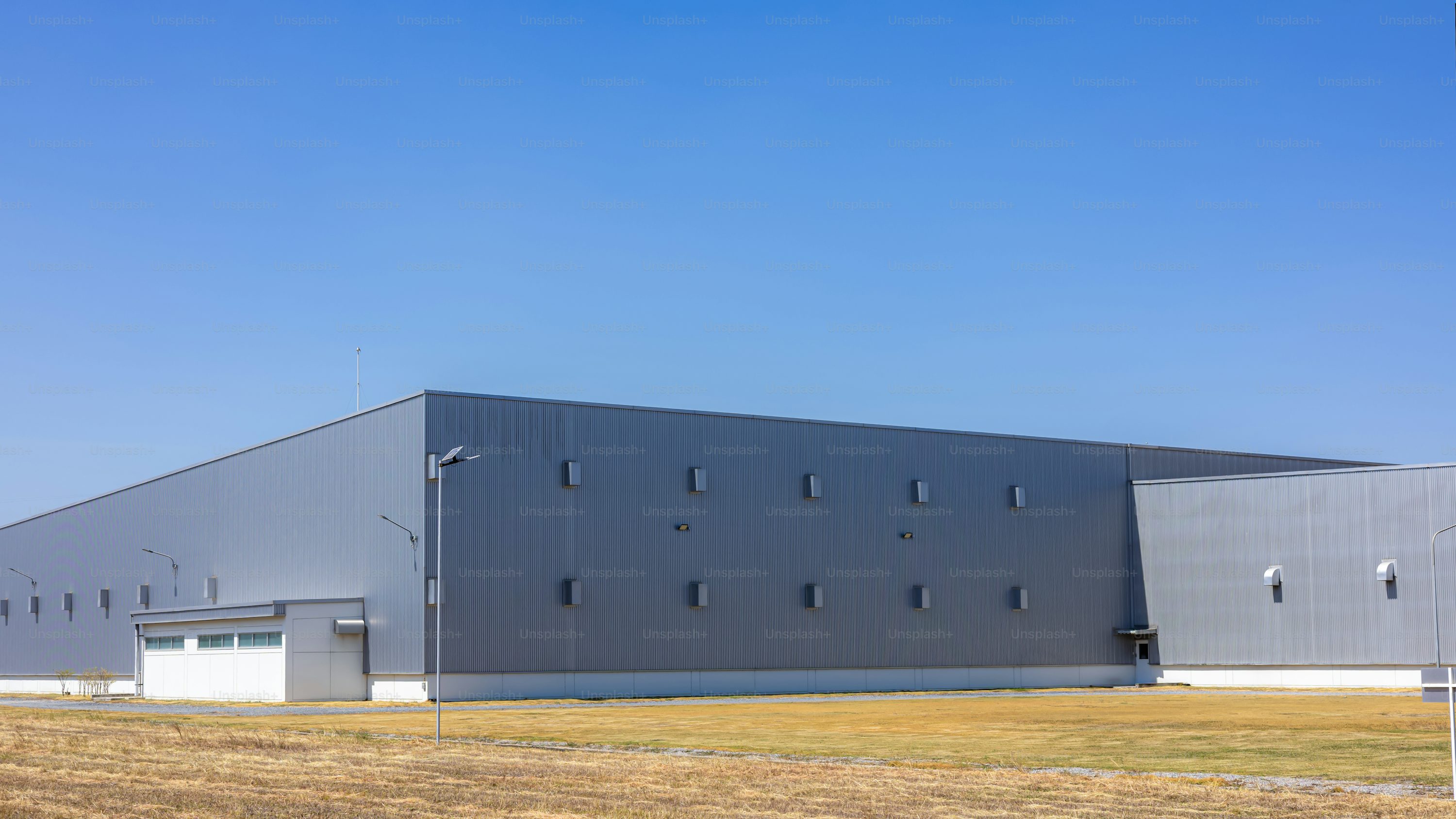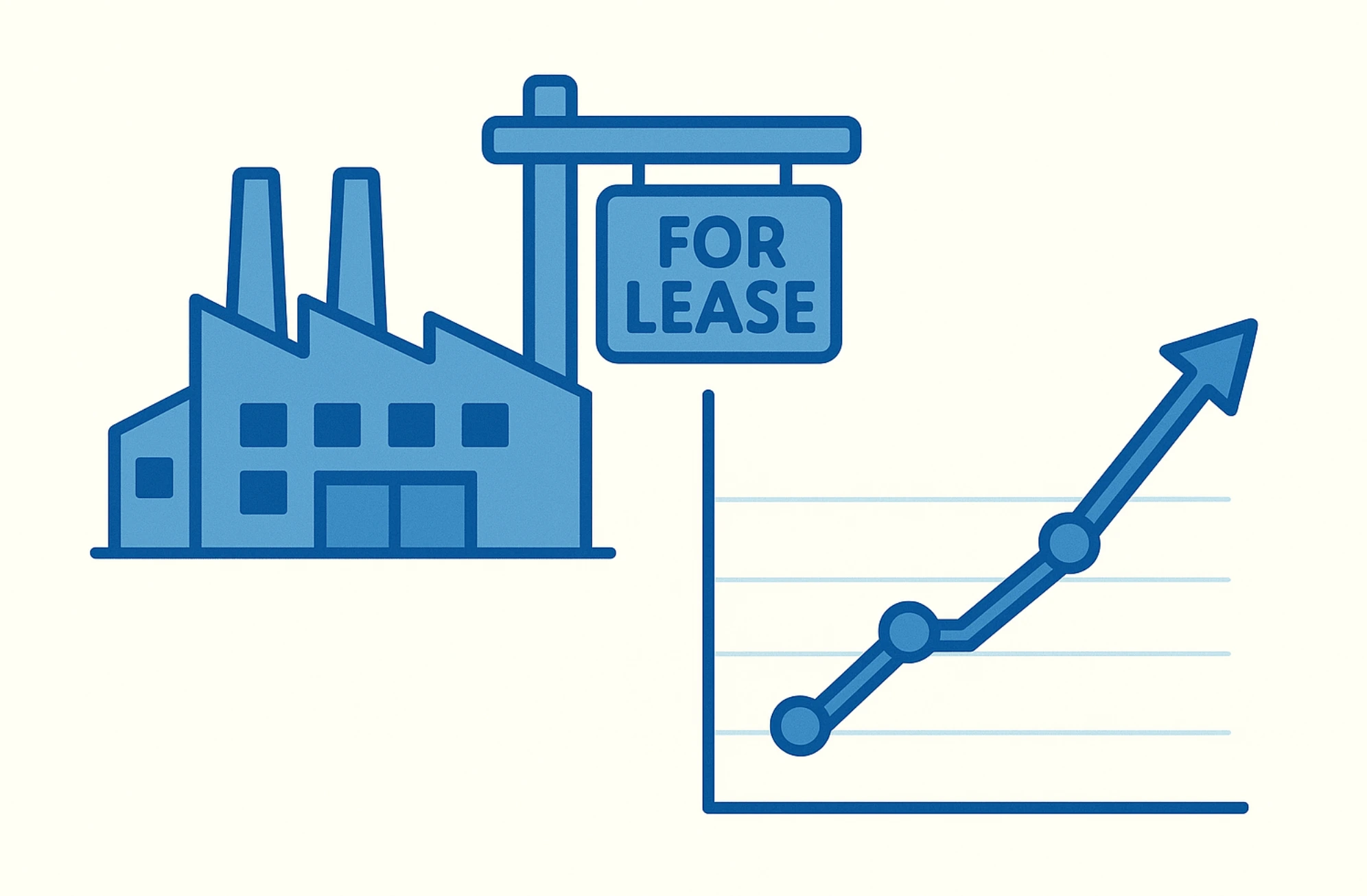Industrial Real Estate Market Trends (2023–Mid 2025)
The U.S. industrial real estate sector continues to show resilience through 2023–2025, even as broader economic conditions level off. Leasing activity, net absorption, and vacancy rates highlight a market that is stabilizing nationally but producing mixed outcomes across secondary markets. Meanwhile, record-breaking online search volumes confirm that tenant and investor appetite for industrial space remains elevated.
Holland Industrial Group has been tracking these shifts closely to guide clients through what is shaping up to be a transitional phase in industrial demand.

National Leasing and Absorption Trends
Absorption reached 135 million square feet in 2024, with 36.8 million square feet absorbed in Q4 alone. The pace slowed considerably in 2025, with Q1 absorption at 23.3 million square feet and Q2 at only 3.5 million—the lowest quarterly figure since 2010.
Despite slower absorption, leasing demand remains strong. More than 424 million square feet of leases were signed in the first half of 2025, marking an 8.5% increase compared to the prior year. Vacancies rose modestly to 6.6%, a manageable uptick considering the scale of new deliveries.
On the supply side, completions cooled to 71.5 million square feet in Q2 2025—the lowest level in five years. After years of rapid expansion, the market is rebalancing. For investors and occupiers, this shift means strategic timing of expansions and repositionings will be increasingly important as pipelines thin and tenant requirements evolve.
U.S. Industrial Quarterly Net Absorption & Completions (2023–Q2 2025)
Secondary Market Performance
Performance across secondary hubs has diverged sharply:
Columbia, SC
Maintained one of the tightest markets nationwide, with vacancy under 5% and 357,000 square feet absorbed in Q4 2024.
Greenville–Spartanburg, SC
Absorbed 3.7 million square feet in 2024, but vacancy climbed to 10.2% due to heavy new deliveries.
Miami, FL
Posted negative absorption of 1 million square feet in Q4 2024, lifting vacancy to 5.7%.
These examples highlight a core reality of the current cycle: supply pipelines and tenant activity are not always aligned. In undersupplied markets, occupiers face tight competition. In oversupplied ones, owners must recalibrate pricing, concessions, and lease terms to maintain momentum.
Net Absorption vs. Vacancy in Select Secondary Markets (2024–H1 2025)
Tenant and Investor Search Demand
Investor and tenant appetite remains strong. LoopNet reported more than 103 million searches per month for commercial properties in 2024, the highest on record. Industrial listings represented a significant share, underscoring how much of today's market activity originates online.
For owners, this digital demand data provides a leading indicator of interest. For tenants, it means opportunities remain competitive—especially in secondary hubs where investor appetite converges with occupier requirements.
Market Forces Shaping 2025
Several forces are shaping the industrial landscape as of mid-2025:
Large-bay slowdown
Demand has softened for Class A and B spaces above 50,000 square feet.
Small-bay stability
Leasing for smaller bays remains steady, highlighting demand from mid-sized occupiers.
Tertiary headwinds
Leasing and sales timelines in tertiary markets have lengthened, driven by interest rate pressure and elevated pricing.
Global policy impact
Tariff uncertainty continues to create indecision for investors pursuing value-add opportunities.
With speculative construction moderating and demand indicators hitting record levels, we expect 2025 to increasingly favor markets where demand begins to outpace supply—particularly growth-oriented secondary hubs.

.svg)
.svg)










